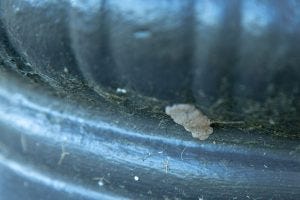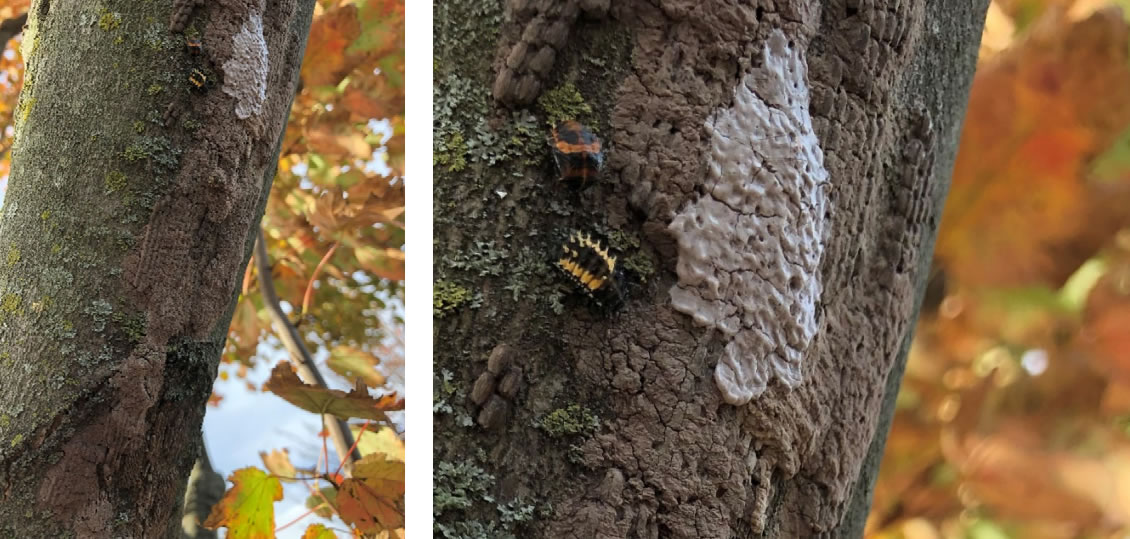
A piece of vinyl window screening secured above the sticky band, secured with push pins at the top and flared out at the bottom several inches below the band can help prevent unintentional catches of other insects and birds. Sticky band traps encircling the trunk can be effective but they must be accompanied by a barrier to prevent the capture of beneficial insects and animals such as birds. Many egg masses could have been laid in the tree canopy above the trap, and the adult stage can fly into the higher branches without climbing the trunk.

Although a trap may catch large numbers of insects it will not completely prevent spotted lanternfly's presence on that tree. The traps are best set by early May to capture the nymphs as they emerge from the egg masses. You may also smash or bun the egg masses once they’ve been removed, but rubbing alcohol and hand sanitizer have been the most effective for destroying them.Traps can be useful to catch the spotted lanternfly nymphs and adults as they climb the tree trunk. Scrape egg masses into a bag or container filled with rubbing alcohol or hand sanitizer.Get a plastic card or putty knife to scrape egg masses off of the surface completely.Once you’ve identified a spotted lanternfly egg mass, follow these steps to destroy it: These eggs masses can be found and destroyed from late September to June. The egg masses contain 30-50 eggs and are protected with a mud-like covering, giving them their grey color and cracked-mortar appearance.

Spotted lanternfly egg masses look like unevenly-spread mortar smeared on almost any outdoor surface. Identifying spotted lanternfly egg masses Spotted lanternfly egg masses are found from September to June.

Regularly check from late fall to early spring. In addition to these outdoor items, you should ALWAYS check your vehicle when moving from inside a quarantined zone to outside its bounds, egg masses can hide underneath your car or in your wheel well. Dog houses, rabbit sheds, chicken coops, etc.The Pennsylvania Department of Agriculture recommends checking the following surfaces for egg masses before moving them from a quarantined area: Spotted lanternfly egg masses can be found on virtually any outdoor surface. If you heat your home with wood, you should be especially cautious purchasing wood this winter, as it’s one of the easiest ways to unintentionally spread the spotted lanternfly. This makes them easy to transport and hard to identify. Not only can they attach to almost any surface, but they can also blend in on almost any surface.

Spotted lanternfly egg masses are extremely versatile. From September to June, identifying and destroying spotted lanternfly egg masses is crucial to stopping the spread of the invasive pest. Incidentally, its egg masses play a critical role in the species’ survival and advancement. If we’re not careful, the spotted lanternfly won’t just be Pennsylvania’s problem. This pest’s skills include hitchhiking, camouflage and survival in a Midwestern climate. Although it is currently contained in 13 counties in southeastern Pennsylvania, the spotted lanternfly has shown an affinity for increasing its population since it was initially discovered in 2014.


 0 kommentar(er)
0 kommentar(er)
